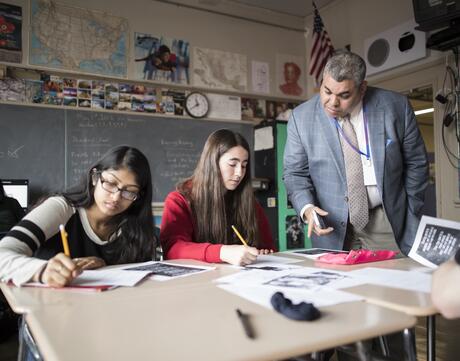
Exploring the Moral Universe of Setting
At a Glance
Language
English — USSubject
- English & Language Arts
Grade
6–12- Culture & Identity
Overview
About This Learning Experience
All too often, the teaching of setting is limited to “the time and place where the story occurs.” This approach fails to engage students with the complexity of setting and the ways in which time and place can impact our sense of self and belonging in the world. Literary critic Wayne C. Booth writes that the plots of great stories “are built out of the characters’ efforts to face moral choices. In tracing these efforts, we readers stretch our own capacities for thinking about how life should be lived.” 1 In order to understand the moral choices that characters in literature make, we must first examine the identities of those making the moral choices, as well as the context in which they are made. Michael W. Smith and Jeffrey D. Wilhelm remind us that “setting is really about ‘rule setting.’ In other words, setting ‘sets’ or determines rules, constraints, and possibilities, potential conflicts and possible consequences.” 2 Trying to navigate the (often unwritten) rules of a place is a complex task that characters face in the world of the text and that we face in the real world.
This collection of learning experiences introduces the concept of “moral universe,” the written and unwritten rules of a place that help to determine characters’ interactions, choices, and courses of action and that help students understand the ways in which time and place influence our identities, sense of belonging, and moral decision-making processes.
- 1Wayne C. Booth, The Company We Keep: An Ethics of Fiction (Berkeley: University of California Press, 1988), 187.
- 2Michael W. Smith and Jeffrey D. Wilhelm, Fresh Takes on Literary Elements: How to Teach What Really Matters About Character, Setting, Point of View, and Theme (New York: Scholastic, 2010), 71.
Preparing to Teach
A Note to Teachers
Before using this learning experience, please review the following information to help guide your preparation process.
Procedure
Activities
Materials and Downloads
Quick Downloads
Get Files Via Google
Unlimited Access to Learning. More Added Every Month.
Facing History & Ourselves is designed for educators who want to help students explore identity, think critically, grow emotionally, act ethically, and participate in civic life. It’s hard work, so we’ve developed some go-to professional learning opportunities to help you along the way.
Exploring ELA Text Selection with Julia Torres
On-Demand

Working for Justice, Equity and Civic Agency in Our Schools: A Conversation with Clint Smith
On-Demand

Centering Student Voices to Build Community and Agency
On-Demand













